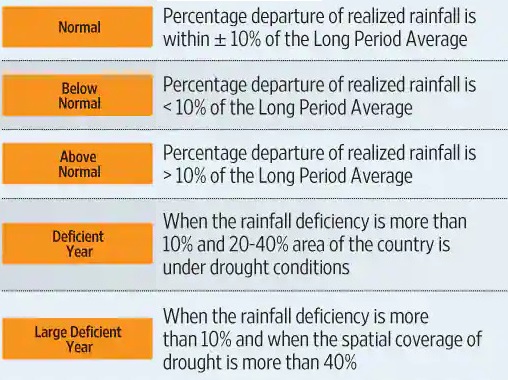China-Myanmar New Passage
China opens its 1st sea-road-rail transport link to Indian Ocean, called the China-Myanmar New Passage.
- It is a transport corridor that connects the logistics lines of Singapore, Myanmar and China.
- This route, which is the 1st to link western China with the Indian Ocean, is a sea-road-rail link.
- This passage is currently the most convenient land and sea channel linking the Indian Ocean with southwest China.
- The railway line of the route currently ends in Lincang on the Chinese side opposite the Myanmar border trade town of Chin Shwe Haw.
Belt and Road Initiative
- It is often described as a ‘21st Century Silk Road’ or ‘One Belt One Road (OBOR)’.
Silk Road is an ancient network of trade routes that connected China to the Mediterranean via Eurasia for centuries.
- It seeks to connect Asia with Africa and Europe via land and maritime networks to improve regional integration, increasing trade and stimulating economic growth.
- BRI is made up of
- Belt (Land-based ‘Silk Road Economic Belt’) - Trans-continental passage that links China with Central and South Asia, the Middle East, and Europe
- Road (Sea-based ‘21st century Maritime Silk Road’) - Route that connects China to Southeast Asia, Middle East, Africa, and Europe.
- The initiative defines 5 major priorities,
- Policy coordination;
- Infrastructure connectivity;
- Unimpeded trade;
- Financial integration; and
- Connecting people.

China Pakistan Economic Corridor
Gwadar port in Pakistan is being developed by China as another key outlet to the Indian Ocean that will bypass the Malacca Straits.
- It is being developed as part of the CPEC.
- Announced in 2013, the CPEC, a part of BRI, is a developmental project between Pakistan and China that consists of highways, railways, and pipelines.
- The goal of 3,000 km-long CPEC is,
- To transform Pakistan’s economy by modernizing its road, rail, air, and energy transportation systems and
- To connect the deep-sea Pakistani ports of Gwadar and Karachi to China’s Xinjiang province and beyond by overland routes.
- It aims to circumvent the Straits of Malacca and the South China Sea.
- CPEC has been compared to the Marshall Plan for the rebuilding of post-World War II Europe in its potential impact on the region.
24% Rain Shortfall
According to IMD, India ended August with a 24% shortfall from the predicted amount of rainfall.
- August normally receives the 2nd highest rainfall in the four monsoon months.
- So even a substantial rainfall in September would not wipe out the deficit.
- This brings India’s overall monsoon rainfall deficit to 9%, meaning “below normal” rainfall.

- In June, the IMD forecast rainfall in northwest, south, east and central India would be “normal” or within an 8% error window of their historical average.
- This forecast too has been significantly off the mark, with Northwest India and Central India registering a 14% shortfall.
Reasons for the August monsoon failure
- The key reason has been an extended break in rainfall from August 8-18.
- Wind-bearing depressions in the Bay of Bengal, coupled with moisture from the Arabian Sea, usually inject surges of rain over central India.
- But this did not happen increasing the break-like conditions.
- Effects of global warming were also impacting monsoon rainfall.
- The number of rain-bearing depressions in the Bay of Bengal was declining and pre-monsoon cyclones, such as Tauktae possibly altered heat distribution patterns over the landmass.
- They influenced moisture distribution and thereby causing erratic rainfall.
New Zealand Zero Covid Strategy
New Zealand announced a strict, level-4 nationwide lockdown to contain the spread of the Covid-19.
- Zero Covid Strategy is an elimination strategy that aims to drive down the number of Covid-19 cases by imposing very strict lockdowns, closing borders and imposing travel bans at the very early stages.
- During the initial stages of the pandemic, New Zealand adopted this strategy.
- Though initially it was seen as a success story, experts are increasingly advising against this.
- On August 17, the country discovered one case of covid in the community.
- But one of the strictest nationwide lockdowns was announced.
- Under level-4 lockdown, people will only be permitted to travel outside for essential reasons and are expected to remain in their bubbles.
- This strategy is discouraged as it is not very sustainable
- With new variants mutating, residents would be “indefinitely trapped”.
- Citizens are stuck in foreign countries, unable to come back for over a year.
- Tourism industry has also been hit hard.
- The main reason for the inability to impart other strategy is because the country’s vaccination drive is very slow.
- With vaccine drives all over the world, more sustainable ways of learning to live with the pandemic should be developed instead of strict lockdowns.
Meghalaya Community-Led Landscape Management Project
This specialized project of the Meghalaya government empowers its communities to take informed action pertaining to their environment.
- This World Bank-supported project was launched in 2018.
- It aims to strengthen rural communities and traditional institutions to take charge of their natural resources.
- This is done by implementing community-led sustainable community natural resource management plans.
- Through this project, the government gives,
- Free access to knowledge on a natural resource management issue,
- Solutions to local problems, and even implement these solutions by the community members, with facilitation support.
- Facilitators - The government set up a cross-functional expert team, which empowers village community facilitators (3 from each village) with digital infrastructure..
- They would take informed action pertaining to their environment, and create their own natural resource management plans.
- Centre of Excellence was launched in Meghalaya as a one-stop centre for natural resources management.
Source: PIB, The Hindu, The Indian Express, Live Mint, The Guardian, The Diplomat, Britannica
